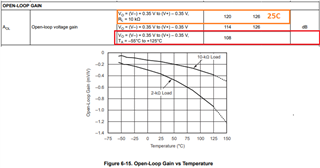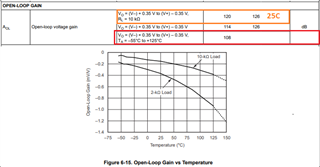Other Parts Discussed in Thread: OPA4140, , OPA4H199-SEP
Tool/software:
The graph of this opamp has unusual units for the y-scale:
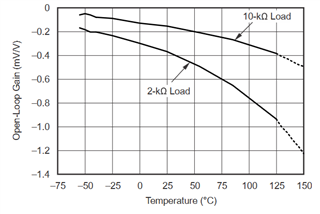
I would assume these values are relative to typical OL gain,
but units in [dB] is what I would expect in this case, not [mV/V], which seems extremely small for open-loop gain.
[V/mV] would make more sense maybe?
Comparing this to the non-space variant of this opamp, the OPA4140
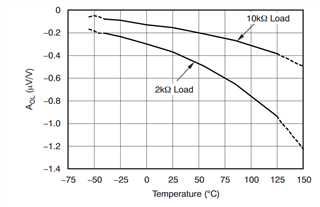
This seems an identical graph, except the units are even stranger: [uV/V] !
The list of specifications of the OPA4H014-SEP suggest a range of 108 - 125 dB [200.000 - 1000.000 V/V] for OL gain,
so I would expect to see something similar in the graph above.
An example would be this graph from the OPA4H199-SEP,
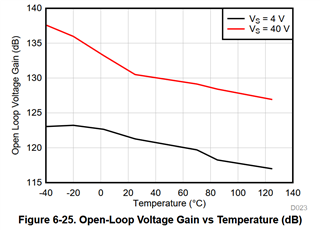
Which makes a lot more sense.
Please let me know if I'm interpreting something wrong here.
Best regards, Maurits


